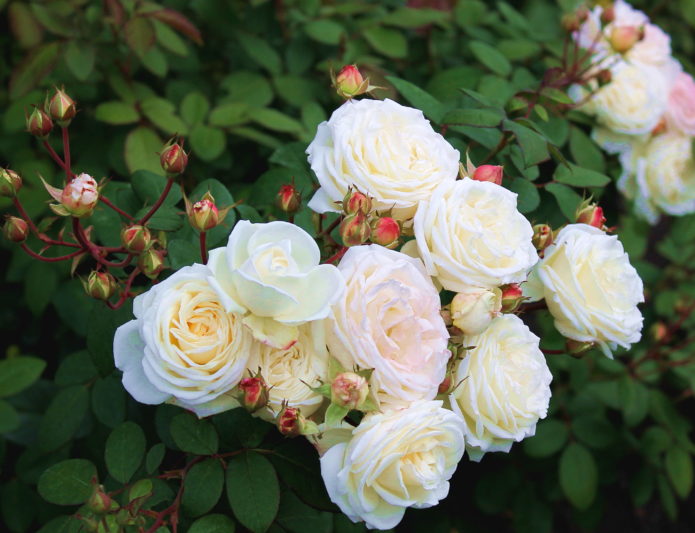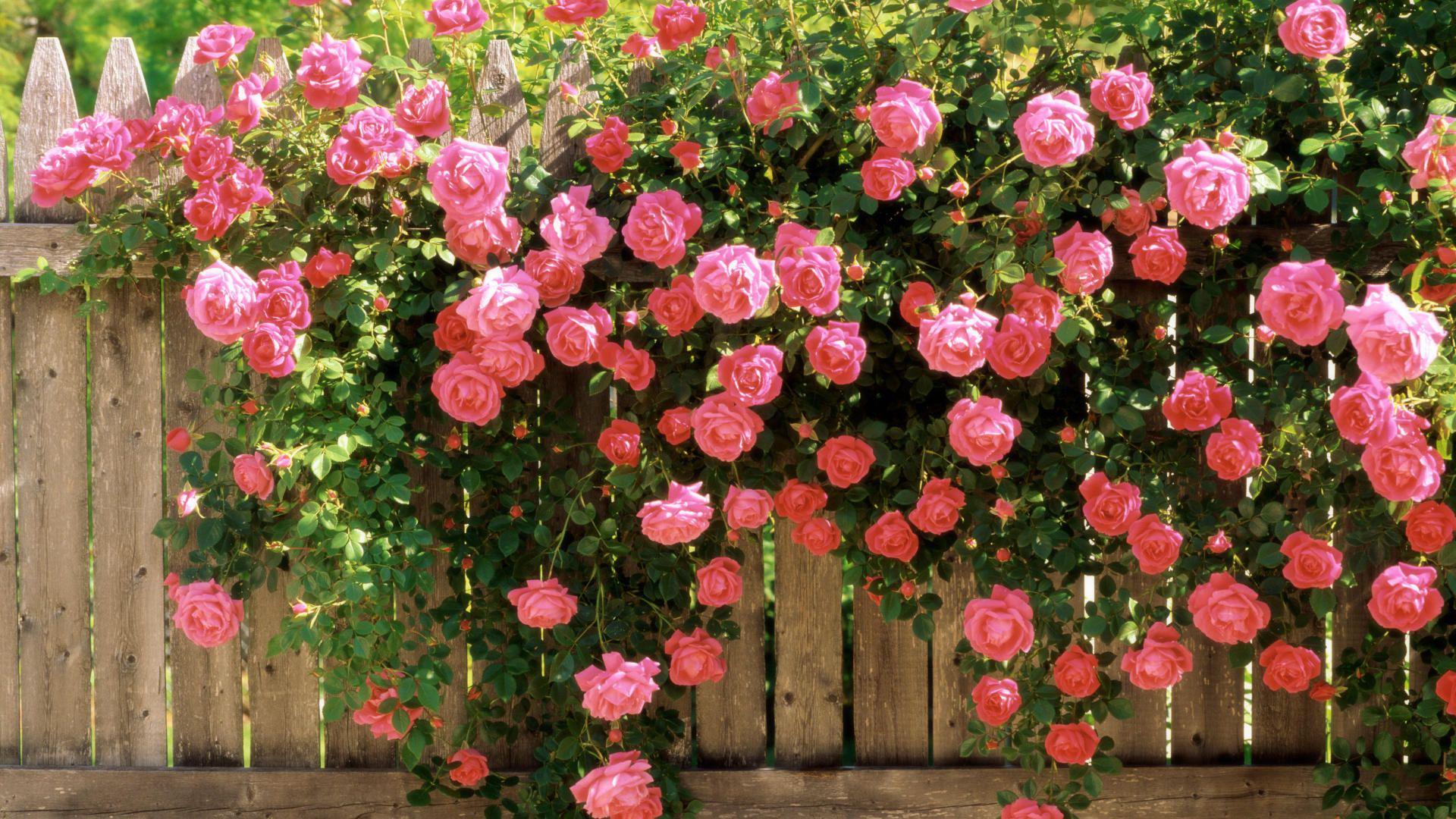Every gardener has his own favorite flower, however, few can resist a luxurious rose. Its presence in the garden can be a source of pride, and a well-groomed appearance will be a great addition to the site. How to plant roses in spring can be found in the article.
Content
Rose: general information
For the first time, roses appeared in the gardens of Ancient Rome: even then about a dozen varieties of roses were described, although they preferred to grow only useful plants in the gardens. After the fall of Rome, the rose began a triumphal march across Europe: by the beginning of the twentieth century, these flowers could be found almost all over the world... In Russia, roses appeared at the beginning of the 16th century, but they became widespread only in the 18th century.
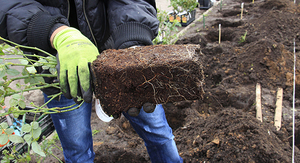 Most of the modern varieties that can be planted in gardens are the result of long selection and careful selection, so roses can be completely different. Their height ranges from 25-30 cm (miniature varieties) to 2.5-6 meters (whip-like). The flower length is 12 to 18 cm, while the number of petals can reach 128 pieces. Roses can be single, as well as in inflorescences of 3-200 pieces. There is no less variety in the shapes of bushes, petal colors and fragrances.
Most of the modern varieties that can be planted in gardens are the result of long selection and careful selection, so roses can be completely different. Their height ranges from 25-30 cm (miniature varieties) to 2.5-6 meters (whip-like). The flower length is 12 to 18 cm, while the number of petals can reach 128 pieces. Roses can be single, as well as in inflorescences of 3-200 pieces. There is no less variety in the shapes of bushes, petal colors and fragrances.
In total, there are three large groups of roses:
- Species or wild;
- Park or old: were known before 1867 and were left unchanged by breeders, as they have enviable durability;
- Garden: these are modern hybrids.
Among them, several of the most popular groups stand out, planting in the ground of which varies greatly:
- Chinese: This group was brought from Asia to Europe back in the Middle Ages. It is distinguished by simple inflorescences that darken when they open.
- Teahouse: hybrid chinese rose and a flower that smells like tea.
- Repaired: has large flowers with double petals of red, pink and yellow shades. Blooms twice a season.
- Hybrid tea: a hybrid of a tea rose and a remontant rose. It has beautiful large flowers, semi-double and densely double, the height of the bush is 60-140 cm. The leaves are large, shiny, sparse thorns, have a red tint.
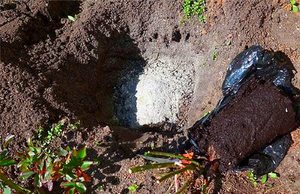 Miniature: small flowers. It is best planted as a home flower or as a decoration for alpine slides.
Miniature: small flowers. It is best planted as a home flower or as a decoration for alpine slides.- Polyanthus: like miniature, it is a small bush up to 40 cm tall, dense and spreading, covered with small flowers of pink, white or red. Blooms continuously and profusely until late autumn.
- Floribunda rose: has a long flowering period, resistance to adverse weather conditions and many diseases, making it ideal for planting. However, unlike tea varieties, it is less aromatic and has smaller flowers.
- Rose Grandiflora: a hybrid of tea hydride and floribunda. Outwardly, the flowers are similar to tea flowers, but are more persistent and blooming for a long time.
- Groundcover: Suitable for covering an area with a "carpet" of roses or creating a "waterfall". It can reach 2 meters in height, but the width is usually several times this figure.
- Climbing: is a creeping rose variety.There are two directions: thin stems with small and lush flowers and thick shoots that need a guide for growth.
Basic rose care
Before proceeding with the choice and learning how to plant a rose, you need to remember some rules:
- For open ground, it is better to choose Russian or Dutch roses - they are more prepared for our climate. But for greenhouses, you can also use southern varieties.
- It is better to plant bushes in spring, when the soil warms up enough. Planting in late autumn can destroy a capricious culture. If the rose was purchased in early autumn, it must be buried in a warm place until spring, for example, in a cellar.
- Fertilize the soil before planting. For this, ash, manure or compost are suitable. They must be entered according to the instructions. After some time after planting, when the plant gains strength, you can start using fertilizing, alternating mineral and organic. In total, fertilization can be applied up to 6 times per season. Before and after adding them, you need to thoroughly water the bushes. It is not worth feeding young shoots: they are still too weak. If the weather is damp, it is necessary to spray the plants, as they will be washed out of the soil.
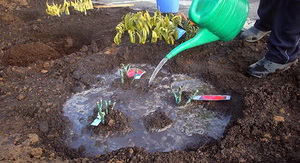 The rose requires abundant watering: every two days at the beginning of growth, then as it dries. In this case, it is necessary to ensure that the earth is not too damp, otherwise the roots will begin to rot.
The rose requires abundant watering: every two days at the beginning of growth, then as it dries. In this case, it is necessary to ensure that the earth is not too damp, otherwise the roots will begin to rot.- Cutting young bushes should not be done - this will have a bad effect on their development. Plucking is necessary. Flowers that have begun to bind must be removed along with closely lying leaves, otherwise seeds will begin to form in the place of the flower.
- When the first signs of infection are found, it is necessary to carry out a complete treatment with special solutions: Fitosporin, Fufanon, Intavir, Fitoverm and others.
- Bushes are pruned twice: in May and in October. In the spring, remove all non-viable and rotten parts, in the fall, remove all the leaves and small twigs that will not survive the winter.
- For wintering, the bush is covered with shavings and sawdust. In August, sawdust is poured directly under the bush, wrapping the stems - this allows them to avoid freezing when the temperature begins to drop. Then, after the final pruning in October, the bush is completely covered and additionally hidden under a box or film. It should be removed in winter only at the end of May, so that the stems are not burnt.
Seat selection
The rose is quite capricious, and first of all this is expressed in the choice of place and soil. Before you start planting a rose, you need to imagine the end result: will it be a large bush, a wall or an arch, an element of an alpine slide or something else. For instance, for a lush bush effect the planting must be tight, otherwise there will be holes in the bush, but the roses must have enough free space, otherwise they will kill each other's water and food.
 Floribunts and other growing bushes with large flowers are planted in groups of 3-5;
Floribunts and other growing bushes with large flowers are planted in groups of 3-5;- Miniatures are placed in the foreground so that they can be seen, at a distance of 15-25 cm from each other;
- Between hybrid tea and polyanthus, it is necessary to maintain up to 30-50 cm;
- Semi-plaited should be located at a distance of a meter;
- Climbing varieties require special supports and nets, which must be taken care of right away.
The rose requires quite a lot of heat and sunlight, especially in the morning and before lunchtime. Strong shade should be avoided, but bright sunlight will badly affect bushes. The flower is bad for the winds, especially the northern one, so it is worth taking care of protecting the bush. It is better if the rose grows away from trees and strong bushes, which can take away water and nutrients from it.
The rose needs good drainage, so it is best to plant it in an elevated position to avoid flooding the soil. A small slope and a south side will also work.
It is worth noting that the rose can grow in almost any soil. Of course extremes must be avoided: clean sand will not suit any culture, and therefore planting roses in the spring will not give any result.
Planting rose seedlings
As is already clear, just digging a hole and planting a bush will not work. Before planting, it is necessary to thoroughly prepare both the land and the seedling itself. Planting is best done in March - April.when the air temperature rises to + 10-12 degrees. The urgency is due to exposure to the sun: if you tighten it, it will heat up too much, and the weak roots will dry out before they can unravel. How to plant a rose correctly is described below:
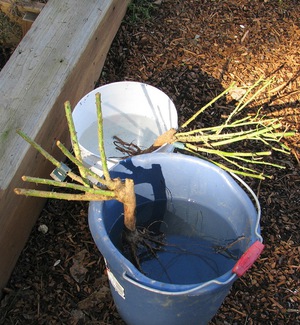 It is possible to prepare the place already in the fall by adding organic fertilizers as top dressing (2 buckets per 1 sq. M) and carefully digging it 15–20 cm deep. During the winter, it will rot, and with the onset of warmth, the soil will be completely prepared.
It is possible to prepare the place already in the fall by adding organic fertilizers as top dressing (2 buckets per 1 sq. M) and carefully digging it 15–20 cm deep. During the winter, it will rot, and with the onset of warmth, the soil will be completely prepared.- 2 weeks before disembarkation, it is necessary to dig a hole up to 60–70 cm deep.
- You need to prepare in advance a mixture of earth (2 buckets), peat (1 bucket), humus (1 bucket), clay (1 bucket), sand (1 bucket), superphosphate (150 grams) and bone meal (150 grams). After falling asleep, the mixture is left to settle a little.
- Immediately before planting, it is necessary to process the roots of the roses. To do this, they are dipped in a solution of copper sulfate (1 tablespoon per bucket of warm water), held for half an hour and planted in the pits.
- If the prepared roses are grafted, it is necessary to shorten them by 2-3 buds, leaving about 20 cm of the aboveground bush. Also, before planting, remove rotten roots and dry parts.
Roses are planted in spring in two ways:
- A little earth is poured into the hole, then the cutting is carefully installed, the roots are straightened and covered to the end, periodically compacting. Care must be taken that the root system is not damaged or tangled, otherwise the rose will develop poorly. At the end, the bush is watered abundantly.
- The hole is poured with a large amount of heteroauxin solution (1 tablet per bucket), then a bush is planted and covered with a mixture. At the end, it is worth watering the soil a little so that it settles, and add more if dips form.
In the same way, you can transplant young bushes when the first leaves appear on them. If the rose is already 4–5 years old, you can transplant it in March and May.
After disembarking
Hilling should be done immediately after planting. This allows you to protect the "young" from the sun, and the roots - to begin to develop. If the stalk is small, it is covered with dug earth with a head, if it is rather high, there is enough slide near the roots. After a couple of weeks, the slide must be carefully removed so that the rose grows.
After that the tops are cut off a little and for 2-3 weeks every two days the bush is watered with growth stimulants. This will give the flowers an impetus to active growth.
Subsequent care should include loosening, top dressing every 2-3 weeks, watering, pinching or pruning, and disease and pest control.
Before the first frost all leaves must be removed from the bushes, cut them and completely prepare for the winter, covering them with sawdust and covering them on top.
Output
Despite the whims, growing a rose is not so difficult. Due to the variety of varieties, you can easily find the optimal variety of flowers for almost any terrain. After practicing on the unpretentious Floribunda, you will understand how to plant roses correctly, and you will be able to master more capricious flower “queens”.
